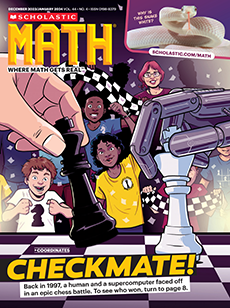Have students read the article individually. Then pair students up and have them perform a second reading of the text together. Have students discuss the following questions with their partner:
• What are LEGO DOTS? (LEGO DOTS are LEGO sets that are designed to have users build and decorate objects such as pencil holders or picture frames.)
• How do DOTS work? (DOTS are intended to bring a crafty aspect to building with LEGO. Users decorate the objects in their own way.)
• How did the DOTS team create this new product? (First they brainstormed. Then they built models. They used a 3-D printer to make prototypes. They made many different versions of the products before settling on their final versions. Kids tested those versions to help decide which would be best to sell in stores.)
• What did Amy Corbett mean when she said, “We want the pieces we make to be part of the LEGO universe?” (The DOTS pieces need to be able to fit with the existing LEGO bricks so that the products can be used together.)
